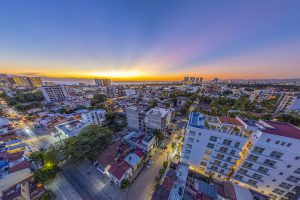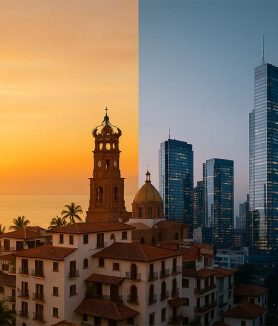Before the Russo-Ukrainian war broke out, the world was already facing serious problems, facing the future, of food supply and the problem was pressing; today the situation has worsened and the specter of famine hangs over some parts of the world due to the massive and exponential growth of the world population. It is estimated that by 2050, we will have a global population of 9.2 billion. If current agricultural practices are maintained, an additional land mass as large as Brazil will have to be cultivated to feed all the inhabitants of the planet, but… architecture is offering solutions that seem to be viable in the near future.
Farmscraper: neologism created from the English words farm, farm, and skyscraper, skyscraper. The concept was developed in 1999 by Dickson Despommier, a biologist at Columbia University in New York who was fighting against the future consequences of climate change. However, media recognition did not come until 2007, when Lisa Chamberlin published an article titled Skyfarming.
In the coming months, the studio of the Milanese architect Carlo Ratti is going to build the Jian Mu tower on the last vacant lot in the business center of Shenzhen, in southern China. The important thing is that the building is presented as the first great farmscraper in the world.
With a façade featuring a vertical hydroponic farm that spans the full height of the building, the Jian Mu Tower was designed for a leading Chinese supermarket to be a place where tenants can grow, sell, buy or consume products on the spot where they work.

Located in the southern Chinese city of Shenzhen, Turin-based Carlo Ratti Associati has unveiled plans to build a 650-foot (218-meter) tower in which 100,000 square feet (10,000 square meters) of the exterior of glass are dedicated to producing food: 590,000 pounds per year, which would also contain about a million square feet for office space, supermarket, gardens and food court.
Hydroponic gardening involves the use of nutrient-rich water vapor instead of soil, and allows plants to be grown in vertically stacked tubes.

Working with ZERO, an Italy-based company that specializes in innovative approaches to farming, Jian Mu’s farm is optimized to produce everything from salad greens to fruit and herbs, while remaining efficient and sustainable.
An AI agronomist would oversee most hydroponic systems, regulate water and nutrients, plan planting and harvesting cycles, and other matters.
The building, designed as the new headquarters of the Wumart supermarket chain, where you can “display the entire production chain in a clean and technologically exciting way”, was named and designed after a mythical tree that separated heaven from earth in Chinese folklore.
“The vertical hydroponic farm embraces the notion of zero food miles in the fullest sense,” said Carlo Ratti. “Crops grown in the tower are sold and even eaten on the spot, which helps us conserve a lot of energy in distributing food.”
The sun will help crops grow, which in turn will shield indoor offices from the sun, reducing the load on air conditioning, while China’s humid subtropical air would help supply plants with moisture.
“This approach has the potential to play an important role in designing the cities of the future, as it involves one of today’s most pressing architectural challenges: how to integrate the natural world into building design.”
What will happen when an entire skyscraper is dedicated to vertical farming?
The Jian Mu tower will be a dazzling case that will reveal that urban and vertical agriculture is already a hope for the future and a reality throughout the world.
Main advantages of the development of vertical farms:
- Crop production throughout the year.
- Reduction of bad harvests related to climate: droughts, floods, plagues…
- Organic farming of all foods: no herbicides, pesticides or fertilizers.
- Elimination of agricultural runoff by recycling sewage.
- Returning farmland to nature, restoring ecosystem functions and services.
- Greatly reduced the incidence of many infectious diseases that are acquired in the agricultural interface.
- Conversion of waste water into drinking water by collecting evapotranspiration water.
8.- Creation of new employment opportunities.
- Drastic reduction in the use of fossil fuels.
- Conversion of abandoned urban properties into centers of food production.












